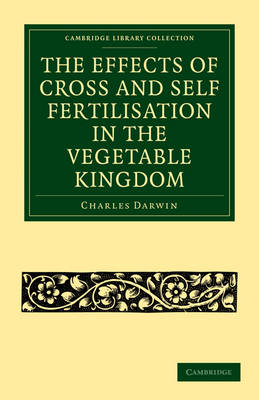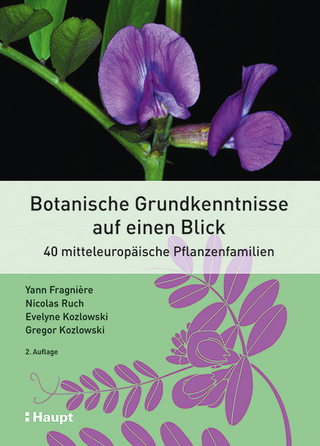
The Effects of Cross and Self Fertilisation in the Vegetable Kingdom
Seiten
2009
Cambridge University Press (Verlag)
978-1-108-00525-8 (ISBN)
Cambridge University Press (Verlag)
978-1-108-00525-8 (ISBN)
After eleven years of meticulous experimentation and observation, described in this volume, Darwin was ready to publish in 1876 his detailed study of the different effects of cross- and self-fertilisation in plants. His findings form the basis of all modern plant breeding programmes.
Darwin's impetus for the experiments of which the results are recorded in this book was 'a mere accidental observation; and indeed it required the accident to be repeated before my attention was thoroughly aroused to the remarkable fact that seedlings of self-fertilised parentage are inferior, even in the first generation, in height and vigour to seedlings of cross-fertilised parentage'. After eleven years of meticulous experimentation and observation, described in this volume, he was ready to publish in 1876 the detailed study which he regarded as a companion volume to his 1862 On the Various Contrivances by which British and Foreign Orchids are Fertilised by Insects. His 'first and most important of the conclusions which may be drawn ... is that cross-fertilisation is generally beneficial, and self-fertilisation injurious': this understanding is of course the basis of all modern plant breeding programmes.
Darwin's impetus for the experiments of which the results are recorded in this book was 'a mere accidental observation; and indeed it required the accident to be repeated before my attention was thoroughly aroused to the remarkable fact that seedlings of self-fertilised parentage are inferior, even in the first generation, in height and vigour to seedlings of cross-fertilised parentage'. After eleven years of meticulous experimentation and observation, described in this volume, he was ready to publish in 1876 the detailed study which he regarded as a companion volume to his 1862 On the Various Contrivances by which British and Foreign Orchids are Fertilised by Insects. His 'first and most important of the conclusions which may be drawn ... is that cross-fertilisation is generally beneficial, and self-fertilisation injurious': this understanding is of course the basis of all modern plant breeding programmes.
1. Introductory remarks; 2. Convolvulacaea; 2. Scrophulariaceae, Gesneriaceae, Labiatae, etc.; 4. Cruciferae, Papaveraceae, Resedaceae, etc.; 5. Geraniaceae, Leguminosae, Onagraceae, etc.; 6. Solanaceae, Primulaceae, Polygoneae, etc.; 7. Summary of the heights and weights of the crossed and self-fertilised plants; 8. Difference between crossed and self-fertilised plants in constitutional vigour and in other respects; 9. The effects of cross-fertilisation and self-fertilisation on the production of seeds; 10. Means of fertilisation; 11. The habits of insects in relation to the fertilisation of flowers; 12. General results; Index.
| Erscheint lt. Verlag | 20.7.2009 |
|---|---|
| Reihe/Serie | Cambridge Library Collection - Darwin, Evolution and Genetics |
| Zusatzinfo | Worked examples or Exercises |
| Verlagsort | Cambridge |
| Sprache | englisch |
| Maße | 140 x 216 mm |
| Gewicht | 630 g |
| Themenwelt | Naturwissenschaften ► Biologie ► Botanik |
| Naturwissenschaften ► Biologie ► Evolution | |
| ISBN-10 | 1-108-00525-X / 110800525X |
| ISBN-13 | 978-1-108-00525-8 / 9781108005258 |
| Zustand | Neuware |
| Informationen gemäß Produktsicherheitsverordnung (GPSR) | |
| Haben Sie eine Frage zum Produkt? |
Mehr entdecken
aus dem Bereich
aus dem Bereich
Gefäßpflanzen: Grundband
Buch | Hardcover (2021)
Springer Spektrum (Verlag)
44,99 €
ein Baum erzählt seine erstaunliche Geschichte
Buch | Hardcover (2024)
Ludwig (Verlag)
23,00 €
40 mitteleuropäische Pflanzenfamilien
Buch | Hardcover (2021)
Haupt Verlag
36,00 €


